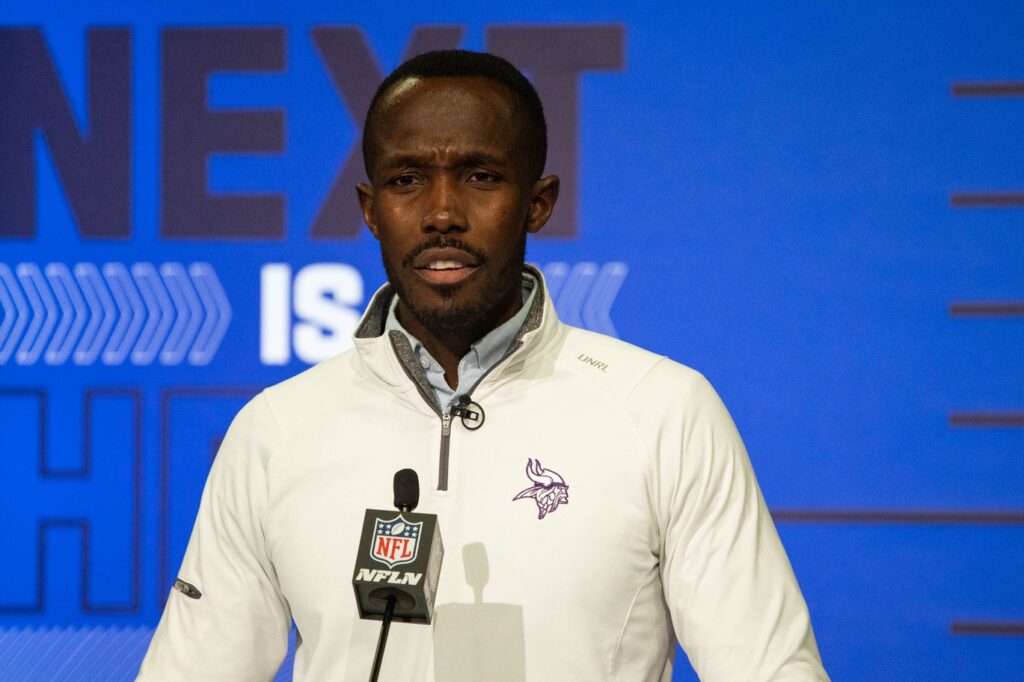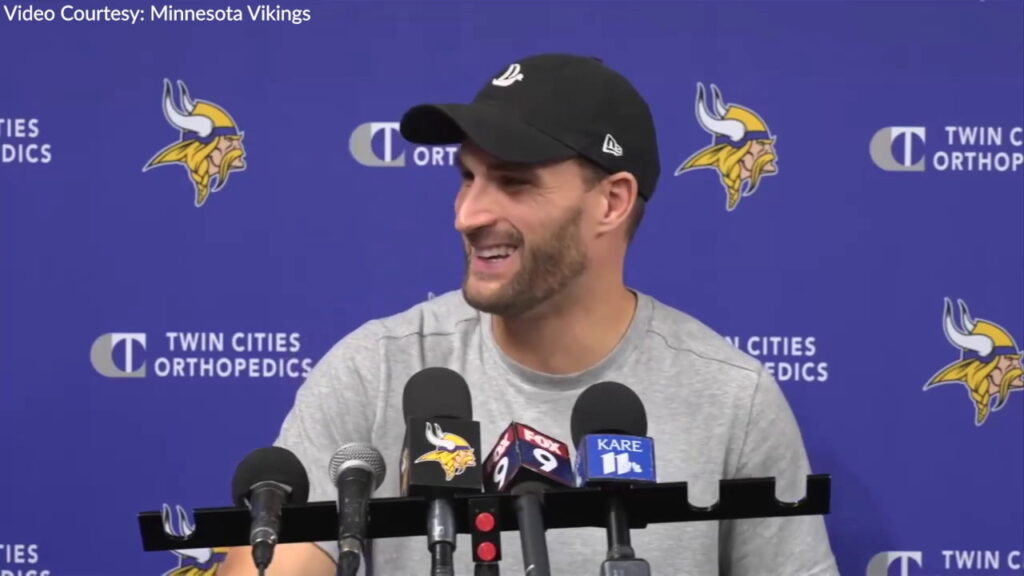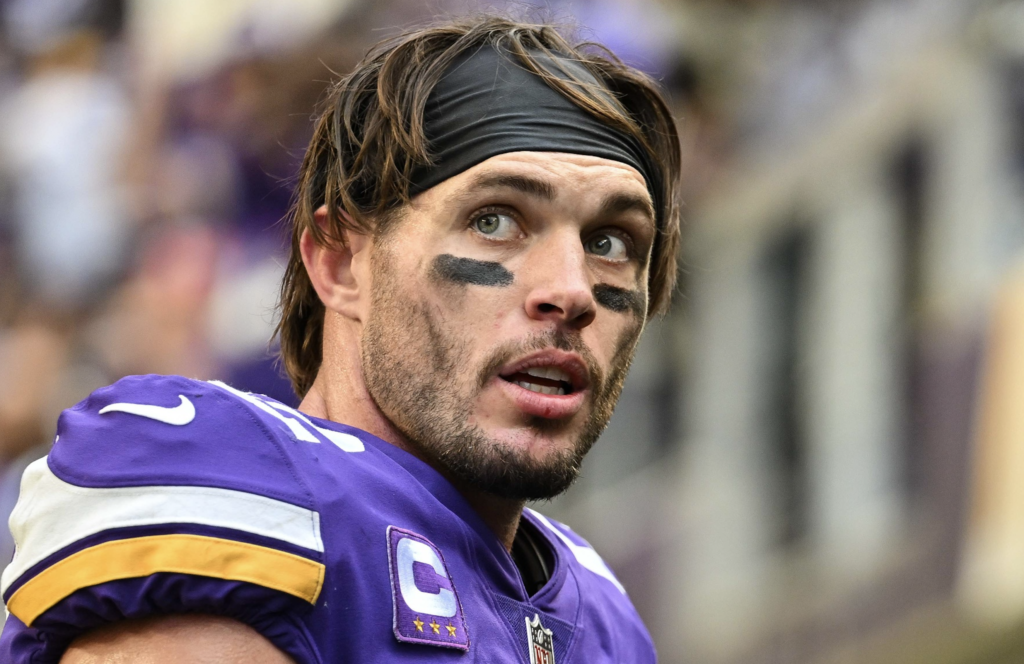When the Minnesota Vikings released Dalvin Cook, the football world seemed to finally take notice of what has been going on throughout the entire offseason. In total, they have now let 7,537 snaps leave the building from starting players.
Only 841 of those belonged to Cook yet there was a lot of, “What in the world at the Vikings doing?” type reactions.
What the Vikings are doing is hardly uncommon in the NFL. With the salary cap, injuries and players’ short peaks, the only way to sustain Super Bowl-caliber success year after year is by having one of the best quarterbacks of all time. Everyone is constantly rising and falling.
Between 2010 and 2021, 11 teams that did not have either Tom Brady, Peyton Manning, Drew Brees or Ben Roethlisberger won 12 or more games a single regular season. None of them repeated their 12-plus win seasons, only two of those teams won 10 games and their collective record was 71-104-1.
One of three things happened to those squads: A) They were still competitive but regressed and were not quite as good B) they had bad luck with injuries and had terrible seasons C) they peaked as a roster and then lost talent, fell back to the pack and either were forced to rebuild or failingly clung to the idea that they could still be good.
The Vikings’ organization has gone through this a few times — usually unintentionally. They have four 12-plus win seasons since the 70s. One of them was last year and the combined record following the other three magical years is 24-23-1.
That isn’t to say that it’s a guarantee the Vikings would have fallen off anyway had they kept Cook and his aging cohorts but the combination of trying to repeat 11 one-score wins from last year with everyone being a year older while facing a harder schedule would be enough to make the road much more challenging.
Instead of chasing 2022, the front office is looking at the future. They will run out an extremely young defense, a quarterback with no future commitment and an impressive group of young linemen and weapons who should be centerpieces for years to come.
While there is no definitive news about the Vikings’ future at QB, they reportedly investigated lots of options this offseason, from looking into the 49ers’ QB situation to making phone calls about possibly trading up.
So, is this plan going to work?
For insight on that, let’s have a look how things played out for recent teams who had stable veteran quarterbacks and were competitive for multiple seasons and then moved on from those QBs while overturning their rosters in rebuild mode….
When it has worked pretty quickly
Post Phillip Rivers Chargers
In 2018, the Chargers went 12-4 behind Philip Rivers’s last great season and then slid back to 5-11 in 2019. They used the sixth overall pick to take Justin Herbert, who immediately put his name in the ring as one of the most exciting young quarterbacks in the game. Los Angeles went 7-9 and 9-8 in Herbert’s first two years before spending wildly in free agency prior to 2022. They won 10 games and blew a lead in the opening round of the playoffs to Jacksonville. Still, Herbert is 25 years old and the Chargers look like they will have a chance to compete for the Super Bowl for many years to come.
Post Tyrod Taylor Bills
In Sean McDermott’s first year, Buffalo moved on from some staple players like Sammy Watkins and Marcell Dareus and went 9-7, reaching the playoffs for the first time since 1999. Rather than try to repeat their success, they moved on from Taylor and drafted Josh Allen. While he didn’t immediately become an elite QB, Allen did get them back into the playoffs by 2019. The Bills traded for Stefon Diggs and stocked up their offensive line and defense with Allen on his rookie deal. They have lost just 12 regular season games in the last three seasons and played on divisional weekend each year.
Post Carson Wentz Eagles
The draft analysis world was baffled by the Eagles picking Jalen Hurts in 2020 but it became clear why they took him pretty soon: Because they were set to clear out their roster and weren’t fully committed to Carson Wentz. From 2019 to 2020, the Eagles moved on from veterans like Alshon Jeffrey and Malcolm Jenkins and had a rough 4-11-1 season. By 2021 they were back in the playoffs and used excess cap space saved by trading Wentz to trade for AJ Brown and load up the defense. The Eagles reached the Super Bowl in 2022 and came within three points of beating the Chiefs.
Of course, Philly represents the absolute best-case scenario for all roster resets: A quick turnaround fueled by hitting on a cheap star QB and well managed signings and draft picks.
It took a while but worked
Post Andy Dalton Bengals
The road back to relevancy was more painful for the Bengals than the teams that turned around quickly. After their best season with Andy Dalton at the helm in 2015 (12-4), they fell into mediocrity for three years winning six, seven and six games before the wheels completely came off in 2019 with a two-win season. They were rewarded for their brutal stretch with franchise quarterback Joe Burrow, who has taken them to the Super Bowl and AFC Championship in back-to-back years. It didn’t hurt that their struggling seasons also netted them receiver Ja’Marr Chase too.
Post Matt Schaub Texans
Following a 12-4 season with Schaub at the helm in 2012, the Texans went completely sideways and won two games the next year. They picked Jadeveon Clowney No. 1 overall and rebuilt the roster into a quality squad that made the playoffs two of the next three seasons but the Texans were never truly in the conversation as a Super Bowl contender because they were quarterbacked by Ryan Fitzpatrick, Brian Hoyer and Brock Osweiler. It wasn’t until they landed DeShaun Watson that Houston gave themselves a shot to compete for a championship. Organizational incompetence and Watson’s off-field problems took apart what should have been a long window to win.
When it did not work
Post Kirk Cousins Commanders
Since Washington elected to let Cousins walk in 2018, they have never ranked higher than 23rd offensively. Bad luck certainly played a role in their failures. The Commanders traded for Alex Smith but he suffered a severe leg injury that forced them into playing a myriad of backup-caliber QBs. In total Smith went 11-5 in Washington. In all the games he did not play from 2018-2022 they went 21-44-1. It’s also worth pointing out that they chose Chase Young over selecting a QB in the 2020 draft, which was a huge mistake considering Tua Tagovailoa and Justin Herbert were on the board.
Post Cam Newton Panthers
In 2017 the Panthers lost a barn-burner wild card playoff game against the New Orleans Saints and haven’t been back since. Injuries took their toll on Cam Newton and they suffered through back-to-back rough seasons before moving on in favor of Teddy Bridgewater in 2019. The wrong coach hire did as much damage as their desperate trade for Sam Darnold in 2020. After that didn’t work out, they took one last swing at a former bust QB in Baker Mayfield and saw the same results. However, their trouble getting back on track eventually led them to the No. 1 overall pick this year and a proven head coach in Frank Reich.
Post Eli Manning Giants
Between playoff appearances in 2016 and 2022, the G-Men topped out at six wins and found themselves down on Eli Manning’s successor Daniel Jones enough to the point that they did not exercise his fifth-year option. Reaching the playoffs at 9-6-1 was treated as a monumental accomplishment last season but it is uncertain whether the Giants can put themselves among the best teams in the NFC. The unfortunate part of their struggles was that mismanagement and poor coaching hires robbed New York of an opportunity to take advantage of Jones’s rookie contract.
Post Jay Cutler Bears
The Bears reached the NFC Championship in 2010 with Cutler at the helm and then failed to get back to the postseason for the remainder of his tenure. Their luck hasn’t been much better since then. After picking Mitch Trubisky over Patrick Mahomes, the QB-haunted Bears built a Monsters-of-the-Midway caliber defense and failed to get past the wild card round. They moved on from Trubisky after four seasons and now are still waiting to determine whether Justin Fields can be their franchise quarterback.
Post Carson Palmer Cardinals
In 2015, Palmer put together a resurgent 13-3 season that took the Cards to championship weekend. Arizona was only a middling team over the two subsequent years and then drafted Josh Rosen. One season later, they went back to the well with Kyler Murray. It appeared they found their franchise QB in Murray as they improved three years in a row with him in the shotgun but the GM-HC combination failed to build a quality roster around him and struggled to adapt the scheme and Arizona fell apart last season. Now they are in a position to potentially tank and aim to draft No. 1 overall in 2024.
Teams doing it right now
Post Tom Brady Bucs
Tampa Bay still has a lot of talent on their roster so they elected to sign Baker Mayfield rather than run out a tank quarterback. With most of their key players in their primes, the Bucs won’t be looking to rebuild for long.
Post Matt Ryan Falcons
Atlanta has stocked up on offensive weapons and are hoping Desmond Ridder can be a third-round gem. If not, they will either give a rookie QB a terrific landing spot or be an interesting destination for any other free agent or tradeable QB next year.
Post Russell Wilson Seahawks
Once upon a time the Seahawks rebuilt around Russell Wilson after Matt Hasselbeck and they were forced to do it again after trading Wilson to the Broncos. Except Geno Smith changed the feelings about Seattle’s timeline by getting them back into the postseason. They didn’t sign Smith to a restrictive contract and are still rebuilding on defense but expectations are now that they sustain competitiveness while finding out if Smith is their franchise QB or if they’ll need someone else.
What we learned
The lessons here is that rebuilds are like snowflakes: Every one of them is different. The Vikings are in a unique position because we normally do not see teams treat offseasons following 13-win years like this. Usually rebuilds are forced, not chose. The Vikings have an offense that’s good enough to make the playoffs, which may accelerate the rebuilding process and keep them from ever needing a Bengals-like fall to get back to truly competing. The Bills didn’t need that. The Eagles only needed one down year.
We can see that the margin between the rebuilds that worked and those that did not were usually predicated on the abilities of the front office and coaching staff to build good rosters around the QBs and get the most out of them — and, as always, whether the team nailed the quarterback position. With the Vikings, Kwesi Adofo-Mensah’s team building outside of the QB will be tested with the paint-by-numbers approach to drafting numerous defensive players and taking swings at players with upside like Byron Murphy Jr. and Marcus Davenport.
Our example teams also show that sometimes a quick and successful rebuild means simply getting lucky. Sometimes it means getting worse before you can get better. Sometimes it means taking the right risk at the right time.










